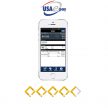
Understanding Cross-Border Payments
Due to the Internet, global commerce has experienced significant growth; international commerce has removed the barriers that many developing nations faced when buying from overseas. It has also given merchants the chance to target a wider audience and improve their sales potential by reaching fresh markets.
However, selling to international customers also mean getting to grips with different ways of collecting or sending money, understanding the various international payment methods available, and the various payment preferences that apply to different countries.
For example, in Germany, cash on delivery and online bank payments are favored above credit cards, and in Finland, direct transfers from an Internet banking account are the preferred option. While in most large countries (United Kingdom, United States and Canada) credit cards or international credit cards are among the top payment choices.
But the international payment options don’t stop at credit cards and direct transfers. Detailed below are some of the most common global payment methods along with their pros and cons.
International Payment Gateway
With the steady increase in global commerce, more internet sellers have made localization a part of their ecommerce strategy.
Localization means not only talking the language of your overseas customers, but offering them a means of paying in their own currency; by accepting currencies that your overseas customers are familiar with, they’ll be more comfortable about making a purchase.
Advantages: accepting local currencies reduces confusion over pricing and lowers the chances of basket abandonment. International payment gateways are also easy to install and readily available through a payment processor.
Disadvantages: websites and payment gateways can develop technical problems, which can cause difficulties making payments. In addition, the sensitive data processed through a gateway can be a target for cybercriminals, which is why it’s imperative you find a payment processor that is PCI compliant.
PayPal
With a presence in over 200 countries, including the Asia Pacific region, the Americas and Africa, PayPal offers a way to collect and make international payments in 25 different currencies. Payments can be made direct from an existing account balance or from a bank account/ credit card linked to the PayPal account.
Payments made through PayPal also have added protection; if the goods are not received, or if they are not as described, the money for the transaction can be claimed back.
Advantages: there is no need to share credit card or bank account details with the seller, and payments can be made in seconds.
Disadvantages: if you are the receiver of the money, PayPal will take a percentage unless the sender chooses to absorb the costs. In addition, PayPal’s policies are quite strict and it’s not supported in every country.
International Electronic Bank Transfers
These allow payments to be made direct to the sellers/buyers account, however, it does require disclosing bank account details and sort code information, which some people are reluctant to do.
To complete an international electronic bank transfer, you’ll need some basic details such as the name of the beneficiary bank, the IBAN (International Bank Account Number) and an international banking code. You might also need a SWIFT code to ensure the payments goes through the right bank.
Advantages: there’s wide access with over 200 countries accepting international electronic bank transfers.
Disadvantages: fees can be expensive and vary from $30 dollars upward. In addition, transfer times can take a while to be completed.
Wire Transfers
Wire transfers are sometimes known as bank transfers or money transfers. The payment gets underway by submitting the details to your local bank; the money will then be send electronically to the sellers or buyer’s bank account.
Advantages: payments are usually transferred quickly and there are measures in place to ensure security.
Disadvantages: while wire transfers are considered safe overall, they can sometimes be exploited by fraudsters, who take the money but don’t deliver the goods or services that they advertise. The fees can also be expensive and vary considerably depending on the financial institution you are using.
Letter of Credit
Also referred to as a documentary credit, letters of credit are commonly used in international transactions, especially in import and export. There are several types of letters of credit available, including stand by, confirmed and unconfirmed.
To set up a letter of credit, you need to contact your bank or financial institution, who will then send you an application pack.
Advantages: the banks act as a guarantor, and there are strict terms and conditions in place to ensure the payment is going to be honored. As part of the terms and conditions, letters of credit should be settled on time and for the correct amount.
Disadvantages: obtaining a letter of credit is more time consuming than other methods.
International Credit Cards
These are issued by credit card companies such as Visa and MasterCard for completing transactions outside of the U.S or U.K. etc. By doing some research, it is possible to get a card that doesn’t attract a foreign transaction fee, which will save money.
Advantages: you can make instant payments and have added protection via your credit card company. You can also pay the balance off in installments for larger purchases.
Disadvantages: interest rates can be costly if the balance isn’t paid every month, and there can be associated costs such as a foreign transaction fee, or hidden costs that add to the balance.
P2P Payments
P2P payments, also referred to as person to person payments, let users send payments via an app. They include security measures to keep the transaction details safe.
Advantages: bank apps are often available for free, and P2P apps offer a quick, modern payment method.
Disadvantages: fees can vary depending on the service that you use, although these are usually set at affordable rates. In addition, must be a member of the service to receive and send a payment.
Conclusion
The methods detailed above are some of the most popular ways of making and accepting international payments. As detailed in the article, each of them has their pros and cons, and it’s imperative that you consider the security and practicalities of each separate payment method before settling on one.
Buyers and sellers should also exercise caution before sending large amounts of cash overseas without undertaking necessary checks.
Ready to get started?
Get in touch or create an account





